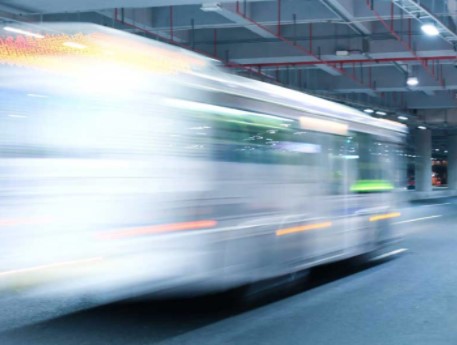Resource Hub
Dynamic scheduling for bus public transport
Published March 14, 2022 in Article
One of the many profoundly transformative aspects of the Covid-19 pandemic is how it has accelerated change in society. Existing trends such as working from home and digitalisation of everyday lives have been turbo-charged, effectively condensing more than a decade’s worth of anticipated change.
With standard behaviour patterns of commuters thrown in the air and confidence in riding on public transport undermined, we face a difficult and uncertain future. Suffering reduced bus revenues, bus service providers must find ways to deliver safe and reliable mobility.

The challenge here is that in ‘normal’ circumstances, a sensible response to falling demand might be to reduce services to match ridership. But of course, that model won’t work well today because a) passenger numbers are often restricted for social distancing, and b) a reduction in services will reduce overall mobility options, thereby eroding fragile faith in bus travel. And if all this were not worrying enough, consider the broader implications of a world where more people shift away from public transport in favour of private cars, Uber and taxis.
Today, many cities have almost as many cars on the streets as before Covid-19. We could well be standing on the precipice of a congestion and air quality disaster – one that will introduce more traffic, more pollution, and a climate crisis moving faster than ever. We must take a step back.
Navigating the New Normal
Bus ridership has taken a huge hit everywhere. Many cities had significantly reduced passenger numbers when compared to pre-Covid levels. If we want public transport to remain relevant and reliable, with strong bus ridership (within potential social distance-defined levels), we must offer passengers the same quality and reliability of experience as before Covid-19 – but with fewer vehicles.
This, of course, is a phenomenal challenge. However, it is perfectly possible, but it will require us to completely reimagine our networks – and the way to do that is with data.
Managing Disruption
So, we know that we need to redefine our networks to meet future demand. This kind of forward prediction necessarily requires adequate management of disruption, and here, three time frames must be considered:
-
- Near short term. In the uncertain post-Covid (and beyond) world, networks must be adaptable for a few hours at a time. This would typically be in response to police incidents, emergency road closures, accidents, or terror threats
- Short term. We need to consider how we can adapt the network for slightly longer periods, perhaps a few days at a time. This might be to manage severe weather events, which are an increasingly likely consequence of climate change
- Long term. Networks must be adaptable for longer periods, measured in weeks or months. This kind of disruption may include the kinds of changing ridership patterns we have experienced with Covid-19
Wanted: Unavailable Data
The one major problem with this requirement is that for this kind of forecasting, the data we need isn’t historical, it’s the future. The events we need to model haven’t happened yet.
Fortunately, this isn’t the insurmountable problem some might expect: this is where machine learning and dynamic forecasting can help by creating a dynamic ‘forward simulator’ that can predict what will happen to a network in terms of the three time frames outlined.
This simulator would require additional input from external sources that may directly affect the network, for example, an interface with the police to implement any road closures or similar issues.
We also need to forecast travel times, enabling us to understand where and when people will be travelling and making it possible to flex resources to ensure the network meets actual demand.
New Ways of Thinking
While the public transport sector has done a good job of utilising available data – think how journey planners have transformed mobility in urban areas, for example – the data we will need to build dynamic networks and schedules simply don’t exist at the moment.
Recognising that genuine expertise and new ways of thinking are required, Trapeze’s Research and Development team is working with a range of external partners on three major research projects that will make machine learning and dynamic forecasting a reality.
-
- Trip Times Predictions. Trapeze is working with a top British university on a trip times predictions algorithm. Already, we are seeing 98% accuracy for ‘here and now’ predictions – an encouraging outcome, though further research is needed into how we use this in the long term
- Interventions. This theoretical simulator shows possible events in the network and is currently being used to train machine learning algorithms to recommend the best strategy in managing disruption
- Demand Prediction. We are in the process of building another theoretical simulator that will enable us to build bus networks and see what algorithm works best
Looking Ahead
There are vast challenges ahead of us. However, in machine learning and dynamic forecasting, we have the tools to build a dynamic new future for bus networks.
By harnessing these tools, we will not only ensure the flexibility that is essential as we emerge from Covid-19, we will also restore faith in buses and public transport in general, creating a cleaner, greener and healthier future.
Article
Bus and Tram Networks – Trapeze Global Perspectives
The definition of mobility is changing. No longer are transport modes (bus, rail, car, walking, etc.) mutually exclusive. However, bus and tram networks still play a vital role in moving large numbers of people – they are the lifeblood of a city.
Mode of Transport
Bus
Solutions
Intelligent Transport Systems